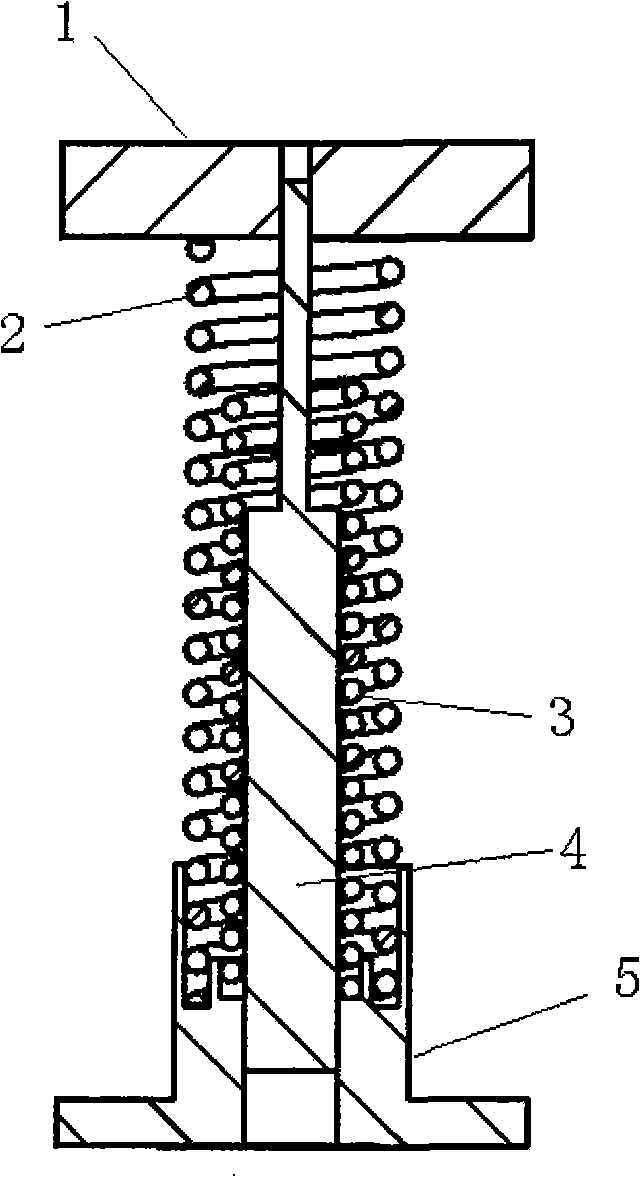Method for simulating elastic curve of human body thoracic cage when pressing heart outside pulmones anabiosis thorax
A cardiopulmonary resuscitation and elastic curve technology, applied in the field of simulated mechanics and models, can solve the problems of inconsistent nonlinear characteristics of human thoracic elastic force, inconsistent human thoracic damping, etc., and achieve the effect of improving the effect
- Summary
- Abstract
- Description
- Claims
- Application Information
AI Technical Summary
Problems solved by technology
Method used
Image
Examples
Embodiment Construction
[0019] This method is slightly different in structure depending on the number of springs, but the basic method and design process are the same.
[0020] Taking the spring group composed of two springs as an example, the specific design method, process and structure are introduced. Because the chest compression depth of human cardiopulmonary resuscitation is 4.0-5.0cm, the maximum compression of the spring group is set to 6.0cm, and the free height difference between the two springs is 2.5cm. It is stipulated that the free height of 1# spring is 2.5 higher than that of 2# spring cm. Because the distance between the front and back walls of the adult thorax is usually 20.0-30.0cm, the total free height of the spring group is set to be <20.0cm.
[0021] First determine the stiffness of 1# spring and 2# spring respectively. figure 1 is a schematic diagram of the piecewise linear fitting elastic force curve (that is, the curve of formula [3]) used in the spring group design proces...
PUM
 Login to View More
Login to View More Abstract
Description
Claims
Application Information
 Login to View More
Login to View More - R&D
- Intellectual Property
- Life Sciences
- Materials
- Tech Scout
- Unparalleled Data Quality
- Higher Quality Content
- 60% Fewer Hallucinations
Browse by: Latest US Patents, China's latest patents, Technical Efficacy Thesaurus, Application Domain, Technology Topic, Popular Technical Reports.
© 2025 PatSnap. All rights reserved.Legal|Privacy policy|Modern Slavery Act Transparency Statement|Sitemap|About US| Contact US: help@patsnap.com



